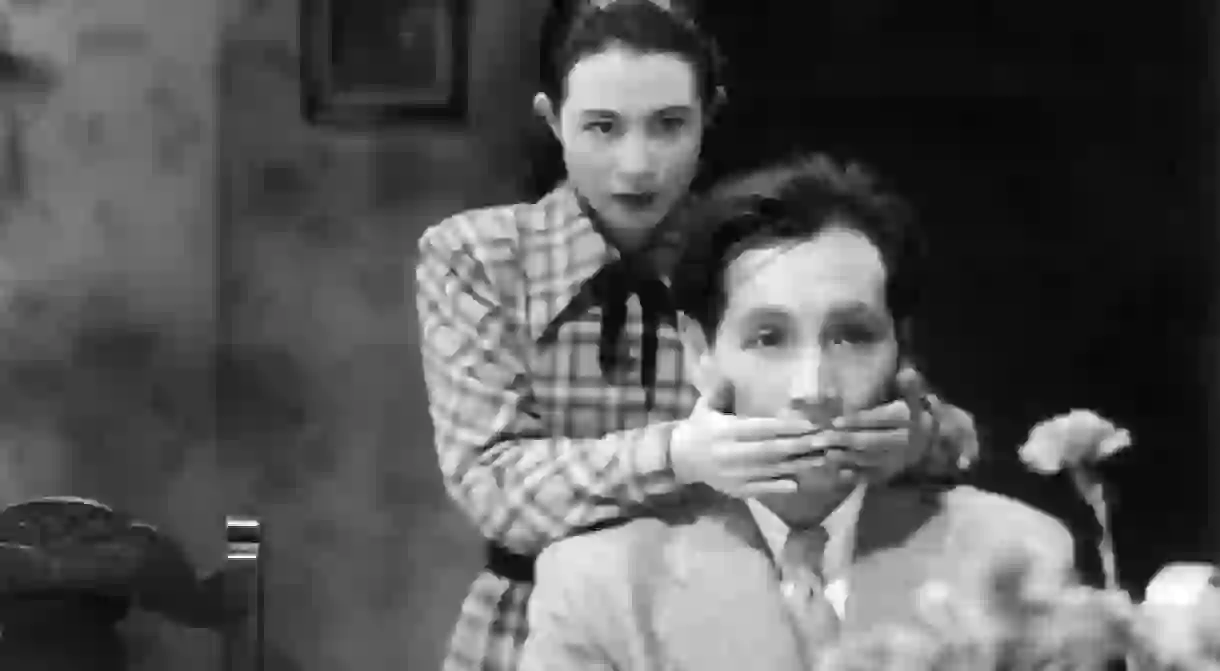The 10 Best Films by Akira Kurosawa

Akira Kurosawa (1910-98) was the director who first brought international attention to Japanese cinema. Hugely influenced by the Hollywood films of John Ford, as well as by Shakespeare, he made films about characters and situations that audiences in the West easily recognized. How many have you seen?
Drunken Angel (1948)
This postwar drama, made during the American occupation of Japan, and therefore subject to strict censorship regulations, marked the first in a long series of collaborations between Kurosawa and the actor Toshiro Mifune. Here Mifune plays a gangster who contracts tuberculosis and develops a bond with the hard-drinking doctor who diagnosed him. Drunken Angel also began a string of collaborations between Kurosawa and composer Fumio Hayasaka, who would later go on to work with Kurosawa’s eminent peer Kenji Mizoguchi.

Rashomon (1950)
Rashomon is the film that marked the beginning of Kurosawa’s international fame, as well as serving as an introduction to Japanese film for a foreign audience after it won the Golden Lion at the Venice Film Festival and an honorary Oscar in 1951 and 1952 respectively. The plot revolves around four characters giving different accounts of the same occurrence, leading the audience to question the nature of truth, motivation, interpretation and recollection. The film also lent its name to the Rashomon Effect, which refers to contradictory descriptions of the same events given by different people.

Ikiru (1952)
The main character of Ikiru (which means ‘to live’), played by the long-standing Kurosawa mainstay Takashi Shimura, is a terminally ill bureaucrat who attempts to find a meaning and purpose to life before he passes away. Very loosely inspired by Tolstoy’s The Death of Ivan Ilyich, Ikiru is one of Kurosawa’s most emotionally resonant films, one that leads the audience to contemplate life and legacy in a very subtle and poignant manner.
‘Ikiru’ | © Toho Company

Seven Samurai (1954)
Kurosawa’s most famous film concerns a village under attack from a group of bandits. The villagers decide to hire seven wandering samurai to defeat the thugs before they can steal their crops. With a running time of over 200 minutes, Kurosawa’s first samurai film is a quintessential action film, and it exerted enormous influence on both Japanese cinema and Hollywood, most notably in the 1960 Western remake The Magnificent Seven.
‘Seven Samurai’ | Toho Company

Throne of Blood (1957)
Kurosawa transports Shakespeare’s Macbeth to feudal Japan in this masterly movie, which features a mesmerising performance by Toshiro Mifune. The film is best remembered for the striking scene in which Mifune’s character, Macbeth’s equivalent, meets his death in a hail of arrows. It incorporates numerous elements of Japanese Noh Theatre, which dates back to the 14th century. This blending of Eastern and Western traditions is thrilling to behold.
The Hidden Fortress (1958)
This action-filled adventure film is credited as a major inspiration for the original Star Wars films. The story stars two humorous bumbling peasants who find themselves caught up in a major conflict involving a princess and rival warring factions, which makes you think of how R2-D2 and C-3PO got unwittingly mixed up in an epic battle between good and evil. A stylistic similarity between the two films is the way in which Kurosawa transitions from one shot to the next using a wipe, something that George Lucas would emulate a little under two decades later.
‘The Hidden Fortress’ | © Toho Company

High and Low (1963)
A loose adaptation of Ed McBain’s King’s Ransom, this tense police procedural drama focuses on the kidnapping of a successful businessman’s son, all within the broader context of a society that was rapidly becoming more affluent and seeing an increasingly pronounced wealth gap. Taken as pure entertainment, High and Low ranks among the very best films Kurosawa ever made thanks to the constant tension, corporate intrigue, and unpredictable plot developments.
Red Beard (1965)
This three-hour tale of social inequality and existential angst was the last of the 16 films in which Kurosawa and Mifune worked together. Set in the 19th century, the story concerns a young doctor (Yuzo Kayama, later a popular musician) who is being trained by an older physician (Mifune), and their various interactions with patients and each other. Through these characters, Kurosawa demonstrates the care and compassion that should be shown to all humans, regardless of social status or wealth. The film was widely acclaimed domestically, winning the Blue Ribbon Award, Kinema Junpo Award, and Mainichi Film Award for best film.
‘Red Beard’ | © Kurosawa Productions, Toho Company

Dersu Uzala (1975)
Dersu Uzala is truly one of a kind. Shot in Russia’s Far East on 70mm film, this epic account of an explorer who befriends a hunter won the Academy Award for Best Foreign Language Film. Ironically, that foreign language was Russian, and the country Kurosawa was representing was the Soviet Union. Kurosawa directed this masterpiece at the lowest point of his career in Japan, a situation that was mainly down to the commercial failure of his previous film, Dodesukaden, which was completed a full five years before Dersu Uzala. His inability to secure funds for another film in Japan prompted this overseas shift, and the result is a magical tapestry of a world seldom seen by outsiders.
‘Dress Uzala’ | © Atelier 41, Daiei Studios, Mos Film

Ran (1985)
Based on Shakespeare’s King Lear, Ran was the most complex and expensive film of Kurosawa’s career. Much like Throne of Blood, it takes Shakespeare to medieval Japan in spectacularly extravagant fashion. This is all the more impressive when one considers that Kurosawa was 75 years old during the making of the film. Despite his age, the production exudes a freshness and vitality unlike anything he had made before, offering a feast for the eyes. The costume designer deservedly won an Oscar.













